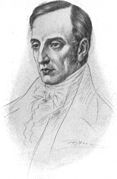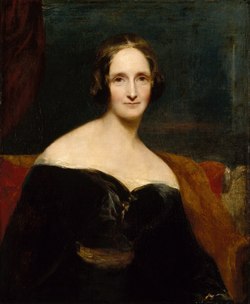2.6: Poetry of the Romantic Era
- Page ID
- 222888
\( \newcommand{\vecs}[1]{\overset { \scriptstyle \rightharpoonup} {\mathbf{#1}} } \)
\( \newcommand{\vecd}[1]{\overset{-\!-\!\rightharpoonup}{\vphantom{a}\smash {#1}}} \)
\( \newcommand{\id}{\mathrm{id}}\) \( \newcommand{\Span}{\mathrm{span}}\)
( \newcommand{\kernel}{\mathrm{null}\,}\) \( \newcommand{\range}{\mathrm{range}\,}\)
\( \newcommand{\RealPart}{\mathrm{Re}}\) \( \newcommand{\ImaginaryPart}{\mathrm{Im}}\)
\( \newcommand{\Argument}{\mathrm{Arg}}\) \( \newcommand{\norm}[1]{\| #1 \|}\)
\( \newcommand{\inner}[2]{\langle #1, #2 \rangle}\)
\( \newcommand{\Span}{\mathrm{span}}\)
\( \newcommand{\id}{\mathrm{id}}\)
\( \newcommand{\Span}{\mathrm{span}}\)
\( \newcommand{\kernel}{\mathrm{null}\,}\)
\( \newcommand{\range}{\mathrm{range}\,}\)
\( \newcommand{\RealPart}{\mathrm{Re}}\)
\( \newcommand{\ImaginaryPart}{\mathrm{Im}}\)
\( \newcommand{\Argument}{\mathrm{Arg}}\)
\( \newcommand{\norm}[1]{\| #1 \|}\)
\( \newcommand{\inner}[2]{\langle #1, #2 \rangle}\)
\( \newcommand{\Span}{\mathrm{span}}\) \( \newcommand{\AA}{\unicode[.8,0]{x212B}}\)
\( \newcommand{\vectorA}[1]{\vec{#1}} % arrow\)
\( \newcommand{\vectorAt}[1]{\vec{\text{#1}}} % arrow\)
\( \newcommand{\vectorB}[1]{\overset { \scriptstyle \rightharpoonup} {\mathbf{#1}} } \)
\( \newcommand{\vectorC}[1]{\textbf{#1}} \)
\( \newcommand{\vectorD}[1]{\overrightarrow{#1}} \)
\( \newcommand{\vectorDt}[1]{\overrightarrow{\text{#1}}} \)
\( \newcommand{\vectE}[1]{\overset{-\!-\!\rightharpoonup}{\vphantom{a}\smash{\mathbf {#1}}}} \)
\( \newcommand{\vecs}[1]{\overset { \scriptstyle \rightharpoonup} {\mathbf{#1}} } \)
\( \newcommand{\vecd}[1]{\overset{-\!-\!\rightharpoonup}{\vphantom{a}\smash {#1}}} \)
“Last Words on Greece” by Lord Byron

“She was a Phantom of delight” by William Wordsworth

After a brief affair that produced a daughter, William Wordsworth lived with his sister and fellow Romantic Samuel Taylor Coleridge in England for a time. Later he formed the Lake Poets with Coleridge and Robert Southey. He eventually married a childhood friend with whom he had five children. He formed close friendships with painter William Green and writer Charles Lamb. His close friendships informed much of his writing.
Stanzas [“Oh, come to me in dreams, my love!”] by Mary Wollstonecraft Shelley
Oh, come to me in dreams, my love!
I will not ask a dearer bliss;
Come with the starry beams, my love, And press mine eyelids with thy kiss. ’Twas thus, as ancient fables tell, Love visited a Grecian maid, Till she disturbed the sacred spell, And woke to find her hopes betrayed. But gentle sleep shall veil my sight, And Psyche’s lamp shall darkling be, When, in the visions of the night, Thou dost renew thy vows to me. Then come to me in dreams, my love, I will not ask a dearer bliss; Come with the starry beams, my love, And press mine eyelids with thy kiss.

How do these pieces speak to the beliefs of the people of the Romantic Era?
How do they fit in the time of the transcendentalists?
Then, consider a modern poem or lyrics and explain why the piece will be considered indicative of the way current society views love. What makes the piece unique to this time?

